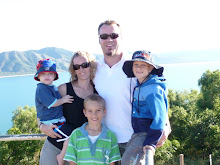The more I interact with the new ICTs the further Inspired and excited I become. I have set up my Wiki, and believe this to be a great tool. I had heard of Wiki preceding this course, but I had no idea of what they were, or how they were used. I was certainly surprised when I found out that WIKIPEDIA is a wiki. I used Wetpaint to develop my wiki. I decided to build a wiki that could help and benefit my learning, both now and in the future. Pearce and Bass (2008, p. 56) state "wikis are the ideal vehicle for promoting communities of practice that engage in the negotiation of meaning." My Wiki is a place where selected people and colleagues can add information about behaviour management strategies in the 21st Century, ideas and strategies that I can accumulate and take on board as a life-long learner. A Wiki is a simple, easy to use collaboration tool that can be used with students during class and outside of school hours for many purposes. For the purpose of an English class who is focusing on narratives and how narratives position audiences to view characters and ideas in particular ways, a Wiki could be used to assist in the learning process as well as engage all learners. In groups, students could form groups to summarise and discuss each chapter of the novel via the use of a wiki. Students would need to discuss the main message, themes and views, possibly analysing the language elements used to develop the setting, characters, and the plot. A list of noun groups and verbs and the way they represent the main character as a hero could be discussed. Each student in the group would add to the online space that allows the collaboration and building of information. By using a wiki students are creating, editing and organising information on a regular basis. Wikis also allow students to break large amounts of information into bite size pieces. Pearce and Bass (2008, p. 56) believes by creating a list type wiki for a first project, establishes "the prior knowledge of the students in the group, [and] it can further serve to highlight pockets of knowledge, identify local experts and indicate gaps in understanding among the group." As George Lucas states "Integrating technology facilitates age old techniques of learning, and helps the educational process and the learning process for the students." Incorporating modern technologies such as Wikis, blogs, digital storytelling, podcast, virtual worlds, SMS etc will enhance today's students learning and enable the teaching focus to be more student-centric. Technologies allows other avenues to tap into diverse learning styles. Although it is important to introduce technologies into the classroom, we need to keep in mind that they do not work alone and the 8LMQs and DoLs are a fantastic base plate for productive and effective pedagogy to begin a student-centric approach to teaching. Kearsley and Shneiderman (1999, p. 1) assert "... Technology can facilitate engagement in ways which are difficult to achieve otherwise ... engagement theory is intended to be a conceptual framework for technology-based learning and teaching." and Pearce and Bass (2008, p. 64) go further to say "Working in the wiki way definately adds another dimension to group work. It brings group work more in line with real-world collaborations."
Reference list
Kearsley, G., & Shneiderman, B. (1999). Engagement Theory: A framework for tehnolgoy-based teaching and learning. Retrieved from CQUniversity e-course, EDED20491 ICTs for learning design, http://e-courses.cqu.edu.au.
Lucas, G. (2007). George Lucas: Sharing his hope for education at dreamforce. Retrieved from http://www.edutopia.org/george-lucas-education-dreamforce-2007.
Pearce, J., & Bass, G. (2008). Technology tool kit: Introducing you to Web 2.0. South Melbourne, VIC: Cengage Learning Australia.
Wednesday, March 31, 2010
Blogs and Aggregators
Aldred (2010) states "ICTs provides specific pedagogical differences/advantages that can be used to great advantage with your students." The first few weeks of my journey to becoming a teacher has been very interesting to say the least. Working away at the required work, day by day, trying to make sense of it all and not skim through important information was proving to be a tough challenge. I started my blog two weeks ago and was apprehensive to begin with, but once I was into it I became more at ease with the whole process. The next item on the list was to set up a Really Simple Syndication(RSS) aggregator to follow the postings of my course colleagues. I always wondered what this funny looking symbol was. I chose to do this through Google reader. I was confused once again at how the RSS feed in Google reader was any different than clicking on "follow" within each of my course colleagues blogs. This is something that I now understand in that the RSS feed, through Google reader allows you to subscribe to external feeds, not just follow my course colleagues blogs, providing you with a way to stay on top of current issues that are relevant to your particular interests. The RSS You Tube Video is another fantastic way to describe what a RSS feed is and how to set one up. I believe it is a fun way for students to learn and become engaged.
Reference List
Aldred, S. (2010). EDED20491 - ICTs for learning design: Study guide. Rockhampton, Qld: CQUniversity Australia.
Reference List
Aldred, S. (2010). EDED20491 - ICTs for learning design: Study guide. Rockhampton, Qld: CQUniversity Australia.
Monday, March 15, 2010
The Journey Begins
What an interesting few weeks already. I have learned so much about myself as a learner and how to incorporate modern technologies within our classrooms, to ensure engagement of all learners from diverse backgrounds. There has been a mountain of readings and so much information to take in. I am excited at the prospect of this blog actually working and becoming a reflective tool I can use not only during my studies this term but in the future, as I continue my path as a life-long learner.
Subscribe to:
Comments (Atom)




